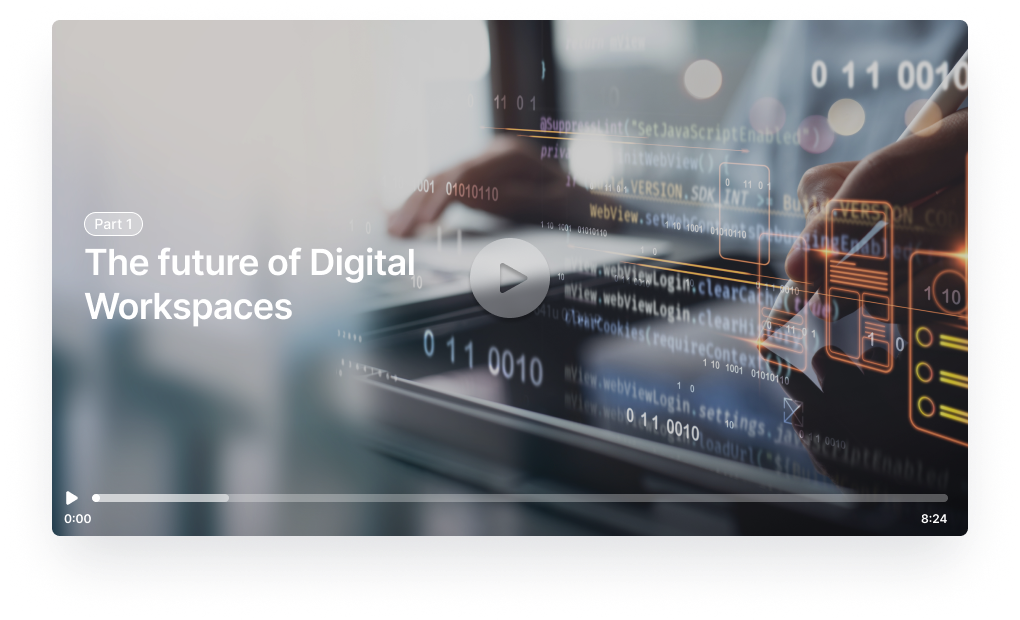Award-Winning Company Founded and Led by Industry Experts.
Liquidware is the premier provider of third-party digital workspace management solutions used by enterprise organizations around the world. Founded in 2009 by technology veterans, Liquidware is an EUC pioneer, developing a stack of offering that support all major, widely adopted workspace platforms including Microsoft, Amazon, Citrix, Dizzion and Omnissa.
The company has anticipated every major milestone in the evolution of virtual workspaces by designing innovative solutions to fill white and gray space around these key platforms. Liquidware is a one-stop shop for enterprise customers who want to gain more from their significant investments in workspace environments by re-engineering long-standing legacy approaches.

Liquidware
Executive Team
We’re a cross-disciplinary team that loves to create great experiences for our customers.

David Bieneman
Founder & CEO
David Bieneman is a technology entrepreneur with three decades of experience in virtualization and end-user computing. His career began in the 1990s, working with VM/386, MultiNode, and Citrix—technologies that laid the foundation for his deep expertise in digital workspaces. In 2002, he founded Vizioncore, recognizing VMware’s growing potential and leading the company to create the first commercially available hot backup and recovery solution for VMware. This advancement helped transform VMware ESX from a server consolidation solution into a full disaster recovery platform, accelerating its adoption across industries and businesses of all sizes. Vizioncore’s success led to its acquisition by Quest Software in 2008.In 2009, he founded Liquidware with a mission to empower IT teams and end users by providing innovative solutions that simplify digital workspace management. With a focus on optimizing user experience and reducing complexity, Liquidware has pioneered advancements in assessment, user environment management, application lifecycle management, and secure endpoint remediation. Through the years, Bieneman has collaborated with an exceptional team of professionals, many of whom have been part of this journey for decades.

Chris Akerberg
President & COO
With over 20 years of experience in executive sales and marketing roles within high-tech sectors like disaster recovery and virtualization, Chris has a proven track record of driving growth. He honed his skills early in his career with companies such as Sprint, Barracuda Networks, and Acer, focusing on market development and channel strategies. Since 2005, Chris has been a standout leader in virtualization. He joined Vizioncore as VP of Global Sales and Marketing, transforming it from a startup into a global leader in virtualization management. As President and COO from 2008, he oversaw its rebranding and successful integration into Quest Software, later rising to VP of Worldwide Server Virtualization and Application Management. In 2011, Chris joined Liquidware as President and COO, leveraging his expertise to successfully oversee Sales, Marketing and Operations. At Liquidware, he leads efforts to deliver innovative digital workspace solutions, empowering organizations to optimize user experiences and manage complex IT environments effectively. He holds a B.S. in Operations Management and Information Systems from Northern Illinois University.

Jason Mattox
Chief Technology Officer
With more than 20 years experience, Jason Mattox is well-known in the digital workspace community for his world-class knowledge and leadership in end-user and cloud computing. Jason is often a featured speaker at conferences and events.

David Feathergill
Chief Software Architect
With an extensive background in designing ground-breaking digital workspace software, David Feathergill focuses on bringing state-of-the-art sophisticated technologies into product development strategies and enhancements at the company.

Jason E. Smith
VP, Marketing, CMO
Jason E. Smith joined Liquidware in its first year (2009) and has been a key contributor to the company’s growth and innovation. With deep expertise in user and app management as well as DEX solutions, Jason has been instrumental in shaping the company’s go-to-market strategy. As VP of Marketing and Alliances, he leads strategic partnerships and drives initiatives that expand Liquidware’s reach and influence in the industry.

Morteza Esteki
Senior Vice President and GM, Northern Europe
Morteza Esteki has been appointed Senior Vice President and General Manager for Northern Europe, leading sales and operations across the region. With extensive experience in the software industry, Morteza previously managed sales operations across Europe and the Middle East for leading organizations, including RES and Quest Software. His leadership and expertise continue to drive growth and success for our teams in Northern Europe.

Jenna Hicks
VP, Client Engagement
Jenna Hicks is a seasoned sales leader with over 20 years of experience in the industry. For more than a decade, she has been instrumental in assisting Liquidware to modernize some of the largest and most complex digital workspaces. In her role as Vice President of Client Engagement, Jenna is committed to providing thought leadership that identifies opportunities for innovation and growth, always maintaining a client-first approach. Her extensive experience and dedication to client success have positioned her as a trusted advisor in the field of digital workspace transformation.

Sonja Pelichet
Board Member, GM CEE, Middle East & ANZ
Sonja Pelichet joined Liquidware from DUNES Technologies SA as a founding board member, playing a crucial role during the company’s formative stages. Recognizing Liquidware’s potential early on, she invested her own capital and secured additional key investors to help fund growth. Sonja co‑founded Liquidware SA in Switzerland and is currently a member of Liquidware’s board as well as manages sales and channel operations for Central and Eastern Europe, Middle East and ANZ.

Joseph Ahn
VP, APAC
Joseph Ahn has an extensive background in channel and sales operations across Asia, specializing in enterprise software and the latest End-User Computing (EUC) management solutions. As the head of Liquidware’s APAC (Asia and Japan) business unit, he is responsible for developing and executing regional strategies that drive growth and enhance customer success. His decades of experience in building relationships with strategic partners across APAC continue to fuel business expansion and strengthen Liquidware’s presence in the region. Joseph has played a pivotal role in designing and implementing customized cloud-based proof-of-value platforms that accelerate sales cycles and improve customer engagement for the team.
Support
Our support team is here to help.
Sales
Questions about a product? Get in touch!
Phone
Mon-Fri from 8am to 5pm
Liquidware Labs
Our Locations
Find the location the best fits your needs!
ATLANTA - WORLDWIDE HQ
3600 Mansell Road
Suite 200
Alpharetta, GA 30022
Phone:
+1 678-397-0450
Fax:
+1 678-397-0339
CHICAGO
630 N. North Court
Suite 200
Palatine, IL 60067
BENELUX
Laan van Kronenburg 14
1183 AS Amstelveen
The Netherlands
mailto:info@liquidware.eu
Phone:
+31 (0) 85 0654675
SWITZERLAND - DACH
Rue des Fontaines 14
1274 Signy-Avenex
Switzerland
mailto:infoEMEA@liquidware.com
Phone:
+41 79 872 2954
UNITED KINGDOM
Quatro House
Frimley Road
Camberley
Surrey. GU16 7ER
Phone:
+44 (0) 1276 804 547
